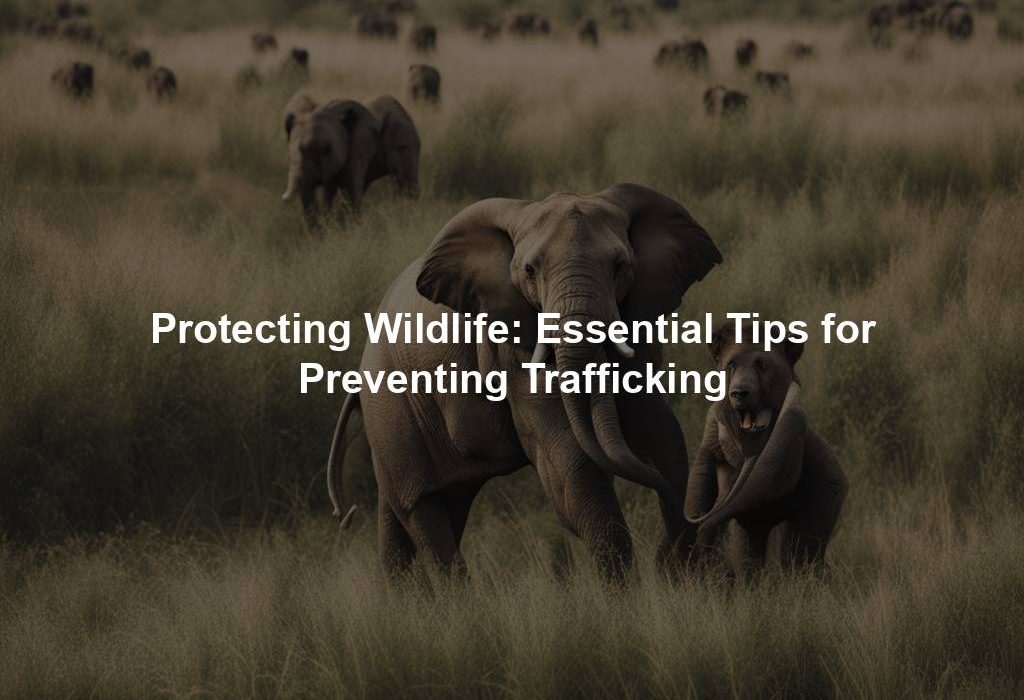Protecting Wildlife: Vital Strategies for Combating Trafficking
Wildlife trafficking is a pressing global concern that jeopardizes the existence of numerous species and contributes to the depletion of biodiversity. The illicit trade in wildlife commodities like ivory, rhino horn, and exotic pets not only inflicts harm on the animals involved but also fuels organized crime and poses a threat to local communities. To address this critical issue, a concerted effort is necessary from individuals, governments, and organizations to thwart wildlife trafficking. Here are crucial strategies for safeguarding wildlife and deterring trafficking:
1. Spreading Awareness: At the core of preventing wildlife trafficking lies the imperative to raise awareness about the issue. Many individuals remain oblivious to the repercussions of their actions on wildlife populations, underscoring the importance of enlightening the public about the impact of purchasing or selling wildlife products. Educational campaigns, social media endeavors, and community engagements serve as effective avenues for disseminating this crucial information.
2. Backing Conservation Initiatives: Another indispensable approach to combat wildlife trafficking is by supporting conservation endeavors. Investing in projects that safeguard and conserve habitats plays a pivotal role in ensuring wildlife populations have a secure and sustainable environment in which to flourish. This support can encompass funding for national parks, wildlife sanctuaries, and anti-poaching patrols.
3. Reporting Illegal Practices: Should you suspect wildlife trafficking activities in your vicinity, promptly reporting such incidences to the authorities is paramount. This entails reaching out to local law enforcement agencies, wildlife preservation entities, or dedicated hotlines established for reporting wildlife crimes. By reporting illegal activities, you can impede further harm to wildlife populations and hold accountable those responsible.
4. Opting for Sustainable Choices: When procuring wildlife products such as timber, seafood, or traditional remedies, opting for sustainable alternatives is imperative. By selecting products certified by reputable organizations, you help diminish the demand for illicit wildlife products and bolster responsible and ethical practices.
5. Exercising Responsible Tourism: Numerous wildlife trafficking cases ensue in prominent tourist destinations where visitors might inadvertently support unlawful activities. As a conscientious tourist, undertaking thorough research before visiting areas associated with wildlife trafficking and selecting tour operators and accommodations committed to conservation and sustainability is crucial.
6. Advocating Legislation: Robust legislation is a linchpin in preventing wildlife trafficking and ensuring accountability for offenders. By advocating for laws and policies that shield wildlife and penalize perpetrators, we can dissuade future unlawful activities and guarantee the protection of wildlife populations for posterity.
7. Volunteering with Wildlife Entities: Volunteering with wildlife organizations is a commendable approach to partake in conservation endeavors and contribute to wildlife protection. By assisting with research, education, and advocacy campaigns, you can positively impact the fight against wildlife trafficking and elevate awareness about the significance of conservation.
8. Collaborating with Local Communities: Collaborating with communities affected by wildlife trafficking is instrumental in formulating sustainable solutions to the issue. Through close cooperation with communities to address the underlying causes of trafficking, such as poverty and lack of education, we can promote alternative livelihoods and empower individuals to safeguard their natural resources.
In essence, combating wildlife trafficking necessitates unified efforts from individuals, governments, and organizations worldwide. By disseminating awareness, endorsing conservation initiatives, reporting illegal activities, opting for sustainable products, practicing responsible tourism, advocating legislation, volunteering with wildlife entities, and collaborating with local communities, each of us can contribute to preserving wildlife and thwarting trafficking. Together, we can effect change and secure a future where wildlife populations thrive in their natural habitats for generations to come.




